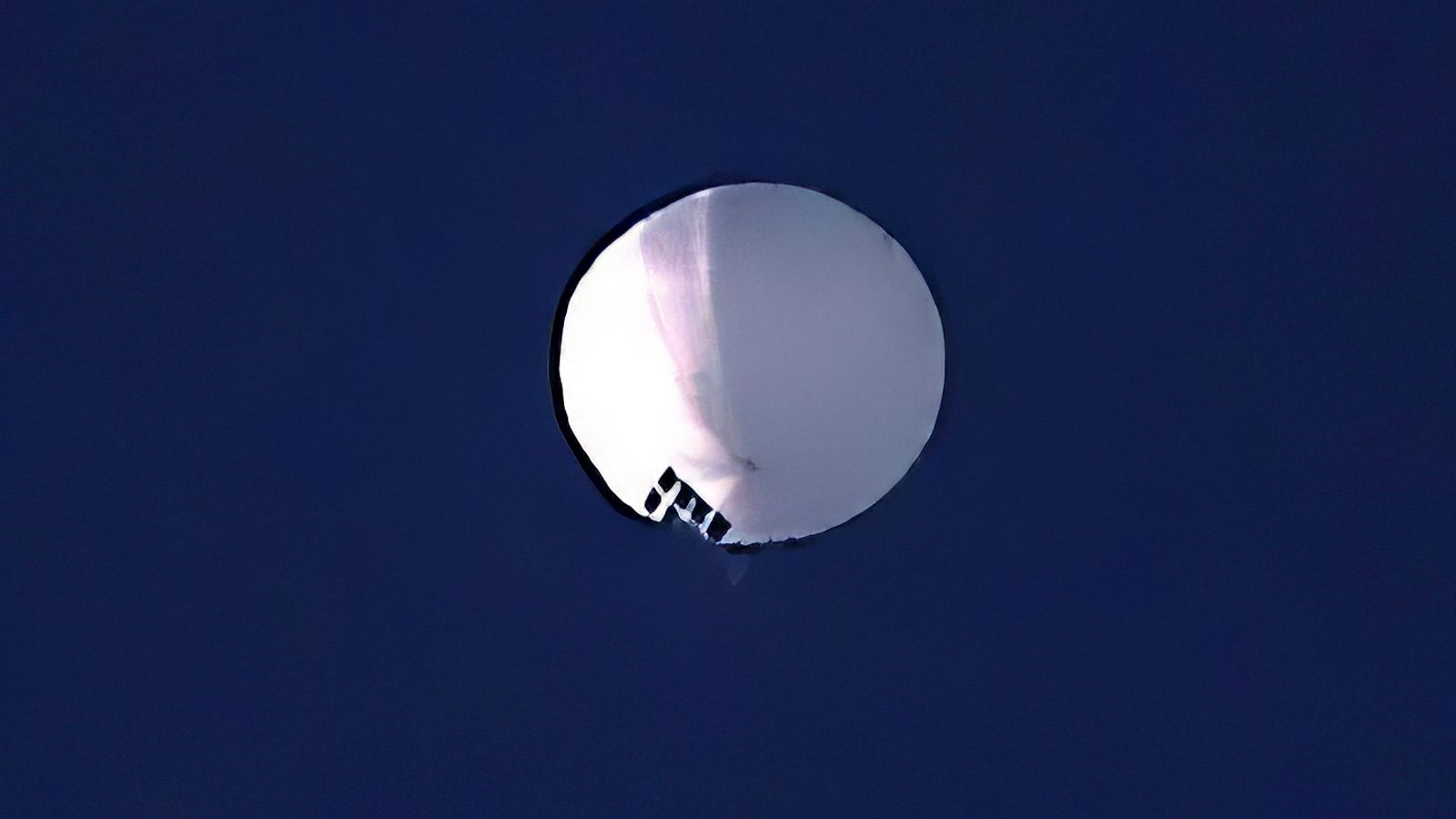In an era of orbital satellites so advanced that they are able to make out objects half the size of cars from space, a spy balloon might seem like a bit of a relic.
They were a prominent tool for reconnaissance during the Cold War and were even used in a more basic form for intelligence gathering in the Napoleonic Wars more than 200 years ago.
But security experts say the balloons are just the “tip of a revolution” in the development and use of new high-altitude surveillance craft, with the UK even investing millions in a project to develop spy balloons last year.
It comes as the US military on Friday said it was tracking a suspected Chinese spy balloon that has been flying over northwestern America in recent days.
Read more:
Chinese spy balloon flying over US airspace, says Pentagon
Spy balloon over US is actually a ‘civilian airship’, says China
A senior defence official said the US has “very high confidence” it is a Chinese high-altitude balloon and was flying over sensitive sites to collect information, while China has not immediately denied the balloon belonged to them.
Beijing admitted that the balloon had come from China, but insisted it was a “civilian airship” that had strayed into American airspace and that it was for meteorological and other scientific research.
What are spy balloons?
The devices are lightweight balloons, filled with gas, usually helium, and attached to a piece of spying equipment such as a long-range camera.
They can be launched from the ground and are sent up into the air where they can reach heights of between 60,000ft (18,000m) and 150,000ft (45,000m), above the flight paths of commercial aircraft in an area known as “near space”.
Once in the air, they travel using a mixture of air currents and pressurised air pockets, which can act as a form of steering.
Why are they still useful in the satellite era?
According to defence and security analyst Professor Michael Clarke, the biggest advantage of spy balloons over satellites are that they can study an area over a longer period of time.
“The advantage is they can stay in one place for a long time,” he told Sky News.
“Because of the way the Earth rotates, unless a satellite is over the Equator, you need three to five satellites going all the time to track the same spot.
“These balloons are also relatively cheap, and much easier to launch than a satellite.”
Will balloons continue to be used in future for spying?
Very much so, according to Professor Clarke.
Despite the wide use of satellite technology, countries including the UK are also focusing on the development and use of spycraft to operate in the upper atmosphere.
In August, it was announced the Ministry of Defence had agreed a £100m deal with US defence company Sierra Nevada to provide high-altitude unmanned balloons to be used for surveillance and reconnaissance.
Professor Clarke said: “(These balloons) are the very tip of the revolution for passive upper atmosphere aircraft.”
He said other defence firms, such as BAE, were working on ultralight solar-powered drones which are able to operate in the upper atmosphere and stay in place for up to 20 months.
Why have China used them now?
According to Professor Clarke, the use of these balloons, if indeed they were launched by China, will likely have been a message to the US following its decision to open new military bases in the Philippines.
“I think it’s a challenge,” he said.
“They (China) are signalling that if the US is going to come closer to them then they will be more aggressive with their surveillance.
Please use Chrome browser for a more accessible video player
Watch: Future Wars: Could there ever be a conflict between the US and China?
“It is also caused a political issue in the US now, because it will be seen as a sign of weakness not to shoot it down.
“This causes some embarrassment, but the US doesn’t need to respond.”
The balloon was spotted over Billings, Montana, on Wednesday – close to one of the US’s three nuclear missile silo fields at Malmstrom Air Force Base.
Please use Chrome browser for a more accessible video player
Military and defence leaders said they considered shooting the balloon out of the sky but decided against it due to the safety risk from falling debris.
Professor Clarke added: “I think the debris issue is a bit of an excuse. It was over one of the least densely populated areas of the US and if they needed to they could have asked everyone to stay inside.
“I don’t think they wanted to make it a bigger issue, because China are daring them to shoot it down and make it an international issue.”
Asia correspondent
Distrust between the Chinese and the Americans is as high as it’s been for decades.
An incident like this would serve to feed that distrust no matter when it happened, but coming, as it has, just days before Secretary of State Antony Blinken’s highly significant visit to Beijing could seriously undermine tentative efforts being made on both sides to try to halt any further deterioration in relations.
Mr Blinken is expected to land in Beijing on Sunday and had planned to meet his opposite number Qin Gang as well as Wang Yi, China’s highest ranking diplomat.
A huge amount of painstaking diplomatic effort will have gone into making such a visit possible – the fact it was happening at all is a progress of sorts.
In recent days there has even been suggestions Mr Blinken might meet with President Xi Jinping himself.
If so, he would be the first US secretary of state granted this level of access in five years and it would be a major sign both sides are serious about attempting to smooth over their deeply damaged relations.
The Chinese leader and US President Joe Biden both recognised when they met at the G20 summit late last year that they need to do more to ensure that their distrust and competition does not descend into conflict and confrontation.
This visit was a clear part of that effort. But mutual recognition that spiralling tensions aren’t a good thing is not the same thing as the active rebuilding of trust.
This incident will likely be seen by the Americans as flying in the face of both. And there is, perhaps, an awareness here in Beijing of just how much jeopardy this incident poses to those fledgling efforts.
Indeed, at a regular news conference in Beijing on Friday, there was a clear desire on the Chinese part to contain speculation.
Foreign ministry spokesperson Mao Ning said China was “verifying” the situation and added: “I would like to emphasise that until the facts are clarified, speculation and hype will not be helpful to the proper resolution of the issue.”
Given the low ebb of current relations between the two, Mr Blinken’s visit was not expected to deliver any breakthroughs. It was being framed more as a chance for both sides to restate their positions and red lines and keep the channels of dialogue open.
It will likely never be known if this spy balloon was purposefully scheduled ahead of the visit or if it’s just unfortunate timing, but if it forces Mr Blinken to cancel, the ramifications for the longer term project of containing deteriorating relations could be very serious indeed.











